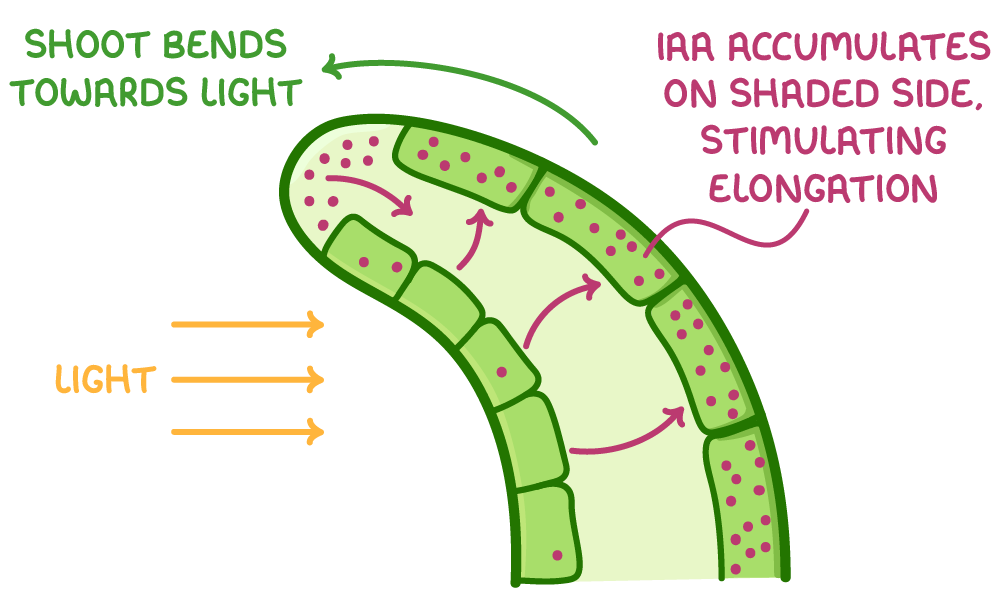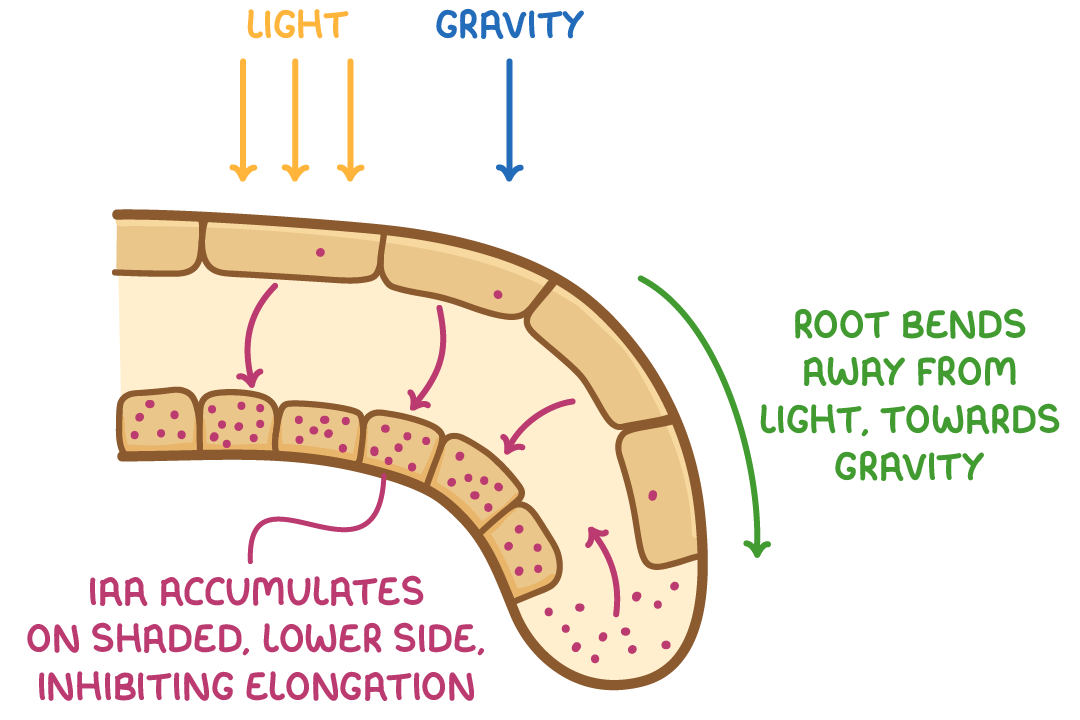Tropisms in Plants
This lesson covers:
- The concept of tropisms and their significance in plant development
- Phototropism and plant growth in relation to light
- Geotropism and plant growth in relation to gravity
- Hormonal regulation of tropic responses in plants
- The influence of gibberellins on etiolation
The significance of tropisms in plant development
Tropisms are directional growth responses of organisms like plants to specific stimuli. They involve differential growth of cells and are triggered by chemical messages. They are described as 'directional' because different parts of the organism can grow towards or away from different stimuli.
Tropisms allow plants to respond to variations in environmental conditions, helping them make maximum use of the environment for survival.
Examples of tropisms in plants
Some examples of tropisms include:
- Phototropism - This is growth towards or away from light.
- Geotropism (gravitropism) - This is growth towards or away from gravity.
- Chemotropism - This is growth towards or away from certain chemicals.
- Thigmotropism - This is growth towards or away from touch or physical contact.
These responses allow a plant to direct its growth towards favourable conditions.
The mechanisms of phototropism and geotropism
Phototropism and geotropism often work together to help different parts of a plant respond to environmental stimuli.
Phototropism
Phototropism maximises the ability of the plant’s shoots and leaves to capture light for photosynthesis, which is essential for the release of energy in the plant.
There are two types of phototropism:
- Positive phototropism - This occurs when the shoots grow towards light.
- Negative phototropism - This occurs when the roots grow away from light.
Geotropism
Geotropism, also known as gravitropism, helps the plant establish its roots and shoots in the optimal orientation. In particular, it helps the roots anchor in soil to support the plant and obtain nutrients and minerals.
There are two types of geotropism:
- Positive geotropism - This occurs when the roots grow downwards, towards the gravitational pull.
- Negative geotropism - This occurs when the shoots grow upwards, away from the gravitational pull.
Hormonal regulation of phototropism and geotropism
The plant hormone IAA, a type of auxin, plays a central role in directing plant responses to light (phototropism) and gravity (geotropism).
IAA simulates cell elongation in shoots, but inhibits cell elongation in roots.
Positive phototropism in plant shoots

Control of positive phototropism in shoots:
- IAA is produced in cells in the tip of the plant shoot.
- IAA is transported down the plant shoot.
- Light stimulates IAA to move from the light side of the shoot to the shaded side.
- IAA becomes concentrated and stimulates more cell elongation on the shaded side of the shoot.
- The shoot bends towards the light.
Negative phototropism and positive geotropism in plant roots

Control of negative phototropism and positive geotropism in plant roots:
- IAA is produced in cells in the tip of the plant root.
- IAA is transported along the plant root.
- Any light available stimulates IAA to move from the light side of the root to the shaded side.
- Gravity also pulls IAA from the upper side of the root to the lower side of the root.
- IAA becomes concentrated and inhibits cell elongation in the lower, shaded side of the root.
- The root bends away from any available light and downwards towards the pull of gravity.
Etiolation and gibberellins
Etiolation is the rapid upward growth that takes place in a plant grown in the dark.
Plants grow upwards rapidly to reach the light for photosynthesis. Etiolated plants are thin and pale due to a lack of chlorophyll.
Gibberellins are responsible for the extreme elongation of the internodes when a plant is grown in the dark. This helps seedlings grow out of soil to obtain light for photosynthesis. Once the plant is exposed to light, levels of gibberellin fall.